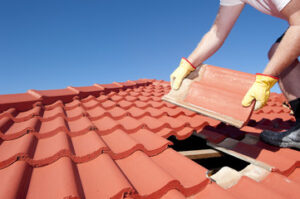Choosing the right contractor for a roofing project is critical. It minimizes the risk of problems during the work, and ensures contract clarity on all significant details.

Ask the contractor to provide you with a list of client references and examples of their work. Also ask them to explain their planned project supervision and quality control procedures. Contact Roofing Contractors Helena MT for professional help.
Professional roofing contractors have years of experience and a proven track record. This gives them a better understanding of the various roofing processes, allowing them to offer the best services and quality results. They also understand the various materials available and can advise clients on which ones are suitable for their specific needs. This can help homeowners save money and ensures that their new roof will last for years to come.
In addition to extensive experience, a good contractor will also have excellent communication skills and a strong work ethic. They will always keep their clients updated on the project and provide timely answers to any questions. This ensures that all the details are understood, minimizing misunderstandings and delays in the project.
Another indicator of a good roofing contractor is their licenses and certifications. A license shows that they have met industry standards, and a certificate demonstrates their expertise in particular roofing services. Roofing is dangerous work, and a contractor with a license and certified employees will take all the necessary precautions to ensure their crew’s safety during the job.
Licensed contractors will also have access to manufacturer warranties, giving you peace of mind that your new roof is guaranteed. In addition, they will be able to provide you with detailed estimates that include all costs associated with the project. This includes materials, labor, permits, and potential extra charges such as disposal or cleanup.
A professional roofing contractor will be able to offer you a range of options that are suitable for your home, and will be able to advise you on the best materials based on your needs and local climate. They will be able to recommend materials that are durable and resistant to wear and tear, as well as those that will add value to your home.
A good roofing contractor will also be able to provide you with a comprehensive warranty that covers both workmanship and material defects. They will be able to answer any questions you might have about the warranty and explain how it works. Be sure to ask for references from past clients, and check online reviews and ratings. Beware of contractors with negative reviews, as these may indicate a poor quality of service or unprofessional practices.
Reputation
When selecting a roofing contractor, homeowners should research their credentials and track record. This can be done by reading online reviews and testimonials from previous clients, as well as checking their licensing, insurance, and certifications. This information will help homeowners ensure that they select a contractor with the proper skills and experience to complete the job correctly.
Homeowners should also consider working with a local contractor. This option can provide several benefits, including easier access for follow-up services and warranty claims. Additionally, local contractors understand the area’s weather conditions and building codes better than out-of-town competitors.
Before hiring a contractor, homeowners should ask for verifiable references and contact them directly to discuss their experience. Asking about the contractors’ professionalism, adherence to timelines, and quality of work can help homeowners make the best decision for their needs.
Inquiring about a contractor’s safety training and policies can also be helpful in determining their overall level of reliability. Having a contractor who prioritizes safety reduces the risk of on-site injuries and property damage, providing peace of mind throughout the project.
Once a homeowner has narrowed down their options, they should request a detailed written estimate. This document should outline the scope of work, materials to be used, project timeline, and payment schedule. It should also include an itemized breakdown of all costs, so homeowners can avoid any hidden fees or misunderstandings.
Lastly, homeowners should carefully review the contractor’s website and make sure it is professional and easy to navigate. A poorly maintained website can be a red flag, and it should include a physical address and multiple ways to contact the contractor. If a contractor refuses to provide these details, it may be time to look elsewhere.
Additionally, homeowners should take the time to read online reviews and ratings on trusted websites such as Google and Yelp. While these platforms have their own unique strengths and weaknesses, they can be a great starting point for identifying reliable roofing contractors. Homeowners should also pay attention to the number of positive and negative reviews, as well as the frequency of each.
Insurance
If you’re in the roofing business, insurance is a must. Having the right coverage protects you against lawsuits and other financial issues, and it’s essential for maintaining your reputation. General liability insurance protects you from third-party claims related to bodily injuries or property damage caused during roofing projects. Typically, this policy covers expenses like medical payments, property repair, and legal fees.
Workers’ compensation insurance is another must for roofing contractors. This is mandatory in most states and ensures that employees receive medical care and wage replacement if they’re injured on the job. It also protects the roofing company from lawsuits related to workplace injuries.
Roofing contractors can also benefit from commercial auto insurance, which covers the cost of vehicle accidents that occur during business operations. This is especially important in cities like NYC, where traffic accidents are common. It’s important to note that personal auto policies usually don’t cover business-related accidents, so a separate commercial policy is needed.
In addition to general liability, roofing contractors can also benefit from specialty policies such as pollution liability. Sealants, adhesives, and coatings used in the roofing process can be harmful to the environment if they’re not properly removed. These products can enter buildings and contaminate the interior, leading to costly cleanup and remediation services. Additionally, water entering a building can create an ideal environment for mold growth, which can be toxic to people inside the building.
Other insurance policies to consider include commercial property, which provides protection for your roofing equipment and materials against damage, theft, and other losses. This is particularly important if you rent or lease your workspaces, as many landlords require this coverage for tenants.
Roofing contractors can also purchase surety bonds, which guarantee work quality and fulfill licensing requirements. Lastly, roofing contractors should invest in builders risk insurance, which is tailored to specific projects and covers the costs of rebuilding structures that are destroyed during construction.
Pricing
In addition to the general costs of materials and labor, roofing contractors also incur a variety of additional expenses that should be passed on to the customer. These include permit fees, disposal charges and mobilization costs (the cost of moving equipment and supplies to the job site). Roofing work often involves hazardous materials that require special handling procedures. Insist that your contractor follows OSHA standards and other industry regulations. This will minimize worker injuries and will save you money on future repairs and cleaning.
A reliable roofing contractor will provide a comprehensive written estimate before beginning any work. This should include a description of the work to be performed, start and completion dates and payment terms. The contractor should also be able to offer client references and a list of completed projects. Inquire about the quality of these jobs and whether or not the clients were satisfied with the results.
Roofing contractors are trained to spot problem areas in roofs that would go undetected by the average person. They can recommend repairs that will fix these issues and extend the life of the roof. In some cases, the repair work can be less expensive than replacing the entire roof.
When choosing a roofing contractor, look for one with a local presence. Local companies are more likely to have a good reputation in the community and be available for follow-up services and inspections. They will also have a better understanding of the unique challenges associated with roofing in your area.
Ask potential roofing contractors for a portfolio of previous work. This will help you gauge their skill level and expertise. Avoid contractors who don’t have a solid track record.
In addition to experience and a solid reputation, your roofing contractor should have the right licensing and insurance. Depending on your state, this may include a business license and liability and workers’ compensation insurance. Check with your local licensing board to find out what requirements apply in your area.
